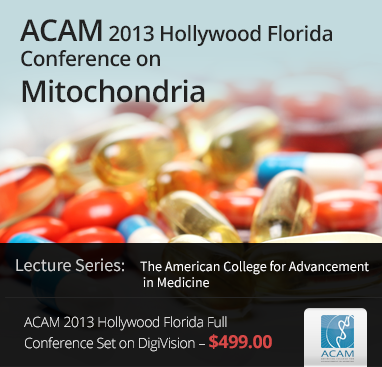- Dr. Sangeeta Pati - Hormones, Nutrition, Detoxification, Mind, and Body
- IV Nutrition Textbook
- IV Nutrition and BHRT Workshops - by Central Drugs
- Regenerative Business Summit by Medfit
- Cash Practice Success Summit
- Special Topic Sets on Hormones, Weight Loss, Stem Cells, Cancer, Sex, and more
- Ron Rothenberg, MD Special Set
- Thierry Hertoghe, MD Special Set

Thanks very much. It’s an honor to be here, especially in light of the very, very moving and inspiring presentation of the Mintz award. As someone who has found his way into the field of age management and longevity, I can tell you that your colleagues in both the basic science arena as well as in the field of surgical medicine actually envy what you do, and so it’s nice to see that you even have pathologists interested in part-taking at some of these sessions. If you can change pathologists, you’ve really made a big difference.
So, I’ve got a little bit of surprise for you, some of you may appreciate it, I’m actually not a genomics guy who’s gonna talk to you about genomics, but I’m gonna use it to set the stage for presentations that you’ll have from Florence, Dr. Comite, as well as Doctor Wu shortly thereafter, and then I’d like to, at the end of this initial presentation, share with you something that I presented at a TED talk not too long ago that actually speaks to my area of expertise, which is in a field of cellular medicine, regenerative medicine. So, forgive me for not being the genomics expert that my colleague Craig Venter, but I’ll try and help set the stage for both, my next presentation as well as for the rest of the morning.
These disclosures obviously are formality. Today I’d like to touch on a number of topics. I’d like to introduce genomics and the concept of genomics, speak about the technologies that are revolutionizing this field, talk about how we apply this to health care and the concept of personalized medicine, and then talk a little bit about where I think it’s going.
So, what is genomics and how personal do you really wanna apply this particular scientific and technical tool? Well, a human body contains a hundred trillion cells, each one of them containing information in the form of DNA that is compartmentalized in 23 pairs of chromosomes. These chromosomes carrying the biological software which is the source of all the synthetic processes that lead to the products, the proteins that provide us both form and function. This programing language of life in DNA is really very analogous to the assembly language or computer language that drives the processors in all of our computational devices. The genome is transcribed to form specific messenger systems, which are then used to create and produce proteins. What’s remarkable is that, from an entire genome containing in some cases very similar quantities of this biological software, the actual form and function that results can be very remarkably distinct and different, as is illustrated here.
To purchase the entire lecture series, click here.
Mar
07,
2016






